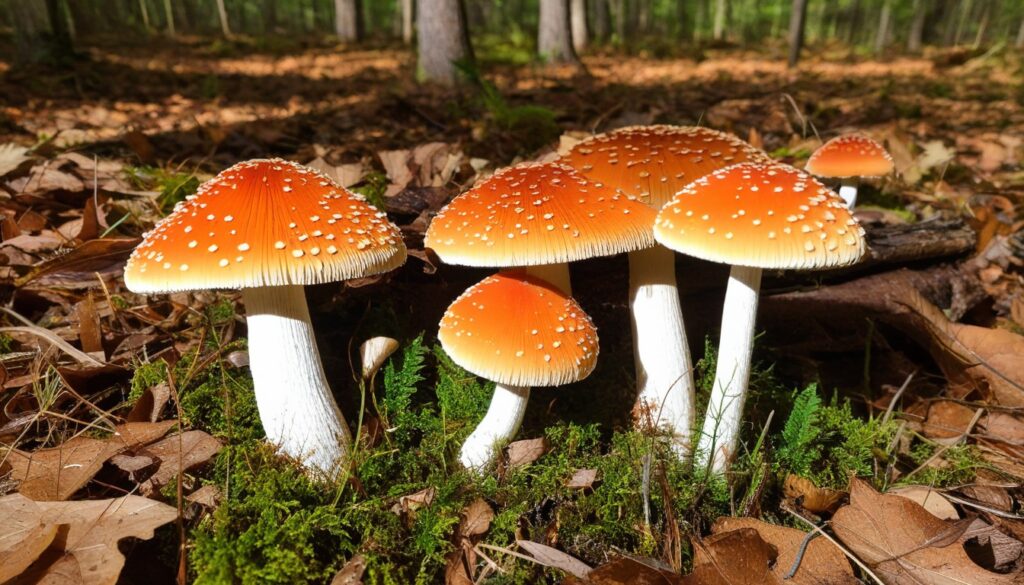Alabama has an abundance of wild mushrooms, including some that are potentially poisonous. While mushroom hunting can be a fun and rewarding activity, it’s important to stay safe while identifying and handling mushrooms.
In this article, we’ll cover tips on how to identify poisonous mushrooms found in Alabama, explore some of the most common poisonous mushroom species in the area, discuss potential health risks associated with consuming or mishandling poisonous mushrooms, and provide essential foraging tips for mushroom hunters. Additionally, we’ll offer guidance on how to keep pets safe during outdoor activities and share important guidelines for safely handling and preparing mushrooms.
Whether you’re an experienced forager or a beginner, read on to learn more about staying safe while encountering mushrooms in Alabama.
Key Takeaways:
- Identifying poisonous mushrooms can be difficult- it’s best to avoid consuming any wild mushrooms unless you’re 100% sure they’re edible.
- Some of the most common poisonous mushroom species found in Alabama include Amanita bisporigera, Chlorophyllum molybdites, and Galerina marginata.
- Possible health effects of consuming poisonous mushrooms include nausea, vomiting, diarrhea, abdominal pain, hallucinations, and even death in extreme cases.
- Before heading out to forage, make sure to research the types of mushrooms that grow in your area and stick to well-known trails or areas.
- If you’re unsure about the identification of a mushroom, consult with an expert or mushroom organization in your area.
Identifying Poisonous Mushrooms in Alabama
Alabama has a diverse range of mushrooms, including some species that can be toxic if ingested. Here are some tips for identifying poisonous mushrooms in Alabama:
Common Characteristics
Many poisonous mushrooms in Alabama share common characteristics, including a distinct odor, slimy texture, or discoloration when cut or bruised. Some poisonous mushrooms also have gills or pores on the underside of their caps, which can help in identification.
Colors to Watch Out For
Some poisonous mushrooms in Alabama may have bright colors that can be a warning sign, such as bright red, yellow, or orange. However, color alone should not be used as the only method for identification as some edible mushrooms can also have vibrant hues.
Shapes to Watch Out For
While many mushrooms can have unique and distinctive shapes, some poisonous mushrooms in Alabama may have specific shapes to watch out for, such as bulbous bases, cone-shaped caps, or thin stems with large caps.
If you’re unsure about a mushroom’s identification, it’s best to err on the side of caution and avoid consumption altogether. It’s always better to be safe than sorry when it comes to poisonous mushrooms in Alabama!
Common Poisonous Mushroom Species in Alabama
Alabama is home to several types of poisonous mushrooms that can be dangerous if consumed. The following are some of the most common species found in the area:
Mushroom Species | Characteristics | Habitat | Dangers |
|---|---|---|---|
Amanita phalloides | White cap, ring on stem, skirt-like membrane | Deciduous trees, off dirt roads, near human habitats | Liver and kidney failure |
Chlorophyllum molybdites | Greenish-brown cap, white gills, and stem | Grows in lawns, gardens, and fields with moisture | Gastrointestinal symptoms, dehydration, and cramps |
Galerina marginata | Brown cap, long stem | Grows on dead or decaying wood | Liver damage |
It is important to note that this table does not contain a comprehensive list of all poisonous mushroom species in Alabama, and further research may be necessary for complete identification.
If you suspect that you or someone else has consumed a poisonous mushroom, seek medical attention immediately.
Potential Health Risks from Poisonous Mushrooms
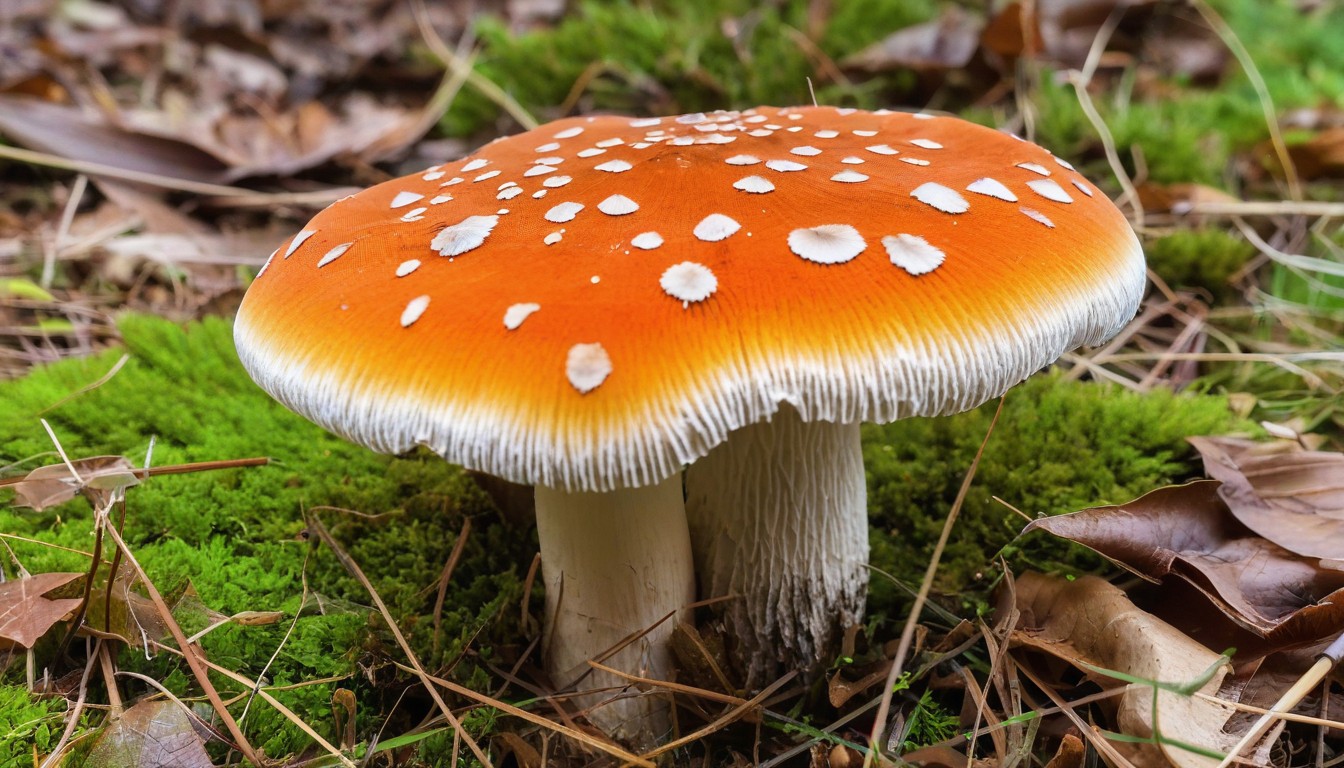
While mushroom hunting can be an enjoyable activity, it’s crucial to be aware of the potential health risks associated with consuming or mishandling poisonous mushrooms. In Alabama, there are several poisonous mushroom species that can cause serious harm to humans when ingested.
The symptoms of mushroom poisoning vary depending on the type and amount of toxin ingested. Some common symptoms include nausea, vomiting, abdominal pain, sweating, and diarrhea. In severe cases, mushroom poisoning can even lead to liver or kidney failure.
Poisoning Types
There are four main types of mushroom poisoning: gastrointestinal, neurotoxic, disulfiram-like, and hallucinogenic. Gastrointestinal poisoning is the most common and typically occurs within hours of consuming the mushrooms.
Neurotoxic poisoning is caused by toxins that affect the nervous system and can lead to symptoms such as weakness, tremors, seizures, and coma.
Disulfiram-like poisoning occurs when mushrooms contain compounds that inhibit enzymes in the liver, leading to unpleasant symptoms such as flushing, nausea, and vomiting.
Hallucinogenic poisoning is caused by consuming mushrooms that contain psychoactive compounds, leading to altered perceptions, mood changes, and profound thoughts.
Appropriate Actions to Take
If you suspect that you or someone you know has consumed a poisonous mushroom, it’s crucial to seek medical attention immediately. Do not induce vomiting or attempt to treat the symptoms at home.
Additionally, it’s essential to properly handle and prepare mushrooms to avoid accidental ingestion of poisonous species. Always wash mushrooms thoroughly before cooking, and do not consume any mushrooms that you cannot positively identify as safe.
“It’s always better to be cautious than to take unnecessary risks when dealing with potentially poisonous mushrooms.”
Popular Edible Mushrooms in Alabama
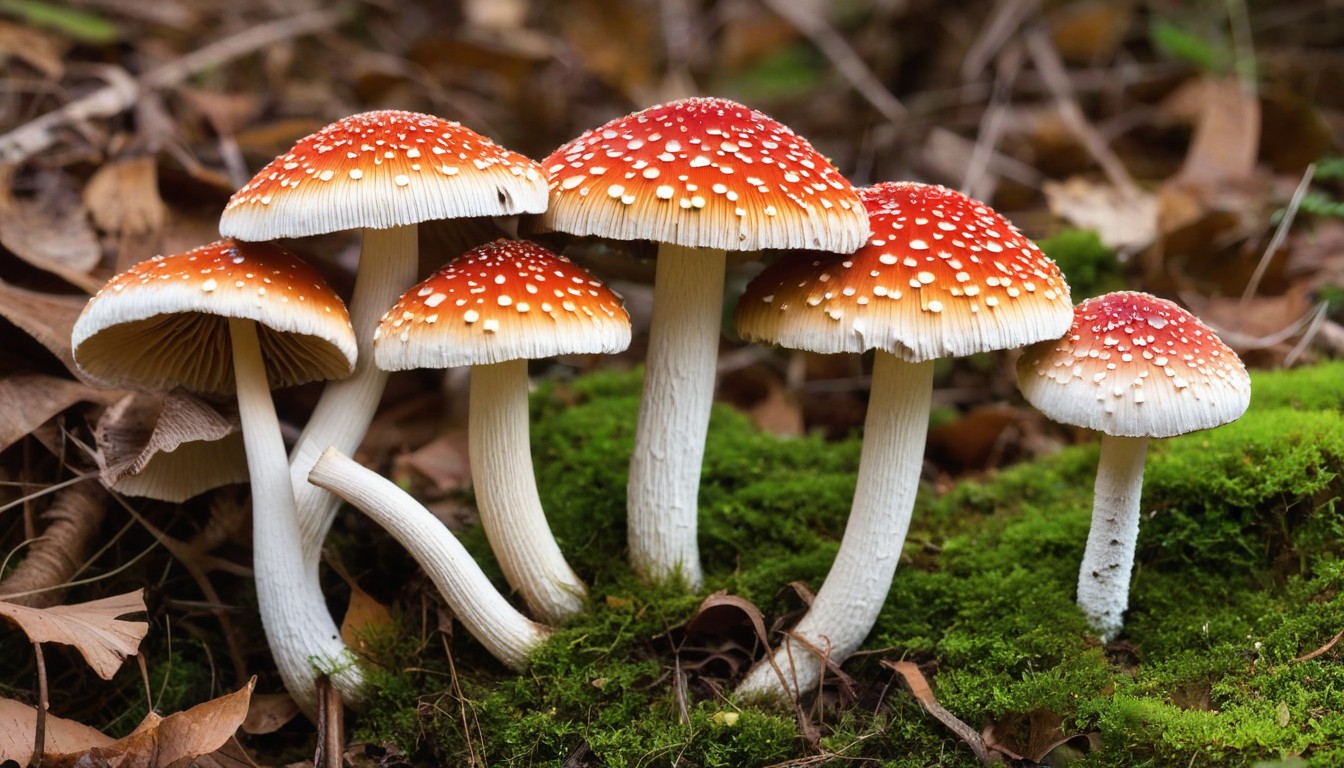
Alabama is home to a variety of edible mushrooms that are both flavorful and nutritious. It is important to correctly identify them before consumption, as some poisonous varieties can resemble edible ones.
Here are some popular edible mushroom species found in Alabama:
Mushroom Species | Distinctive Features |
|---|---|
Distinct honeycomb cap and cone-shaped stem, found in spring and early summer in wooded areas and near creeks and riverbanks. | |
Bright yellow or orange cap with a slightly wrinkled surface and a wavy margin that extends down to stem, found in summer and early fall in hardwood forests and near oak trees. | |
Lion’s Mane Mushrooms | Ivory to pale yellow with cascading icicle-like spines, grows on both hardwood and softwood trees in fall and early winter. |
Large, round, and brown cap slightly depressed in the center, found in summer and fall in conifer forests and near pine trees. |
Other edible mushroom species found in Alabama include Hen of the Woods, Oyster Mushrooms, and Shitake Mushrooms. As a general rule, it is recommended to forage for mushrooms with an experienced guide or join a local mushroom hunting club to ensure accurate identification and safe consumption.
Foraging Tips for Mushroom Hunters in Alabama
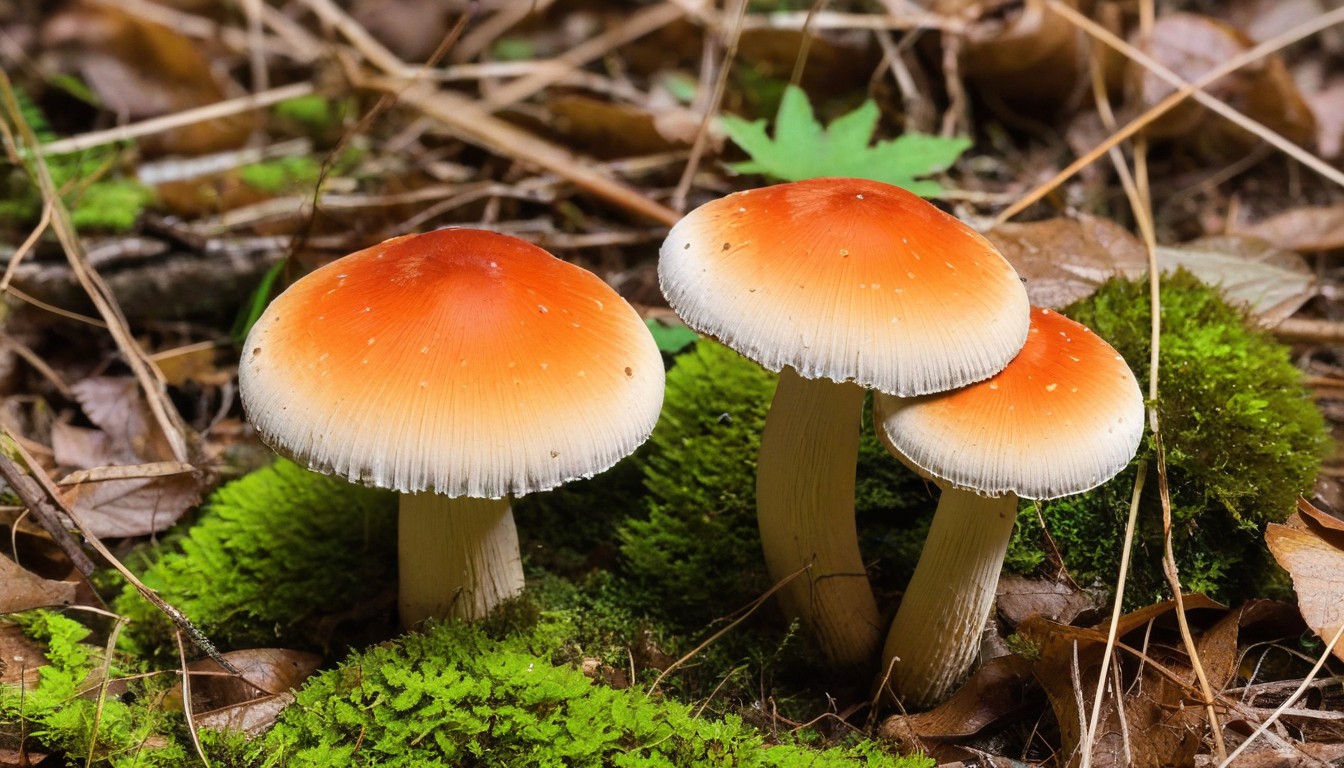
Mushroom hunting is a popular outdoor activity in Alabama, offering a chance to explore the state’s natural beauty while seeking out tasty and unique fungi species. Here are some essential foraging tips for mushroom hunters in Alabama:
1. Get the Right Equipment:
Before setting out on your mushroom-hunting adventure, make sure you have the right equipment. A good mushroom knife is essential, as is a sturdy basket or bag to carry your finds. It’s also a good idea to wear protective clothing and bring along a guidebook to help with identification.
2. Explore the Right Areas:
Knowing where to look for mushrooms is key to a successful foraging trip. In Alabama, areas with moist soil and plenty of shade are good places to start. Look for mushrooms growing near trees, logs, and other natural features.
3. Learn to Identify Safe Varieties:
Identifying safe and edible mushroom species is critical to a successful foraging trip. Take the time to learn about the different varieties in Alabama, paying close attention to their distinctive features, colors, and shapes.
4. Join a Mushroom Hunting Group:
Joining a local mushroom hunting group is a great way to connect with other enthusiasts and learn from experienced foragers. In Alabama, groups like the Birmingham Mushroom Society and the North Alabama Mushroom Society offer regular outings and educational resources for members.
5. Use Caution When Handling and Preparing Mushrooms:
When handling mushrooms, it’s essential to use caution to avoid potential health risks. Always wash your hands and equipment thoroughly, and cook mushrooms thoroughly to reduce the risk of poisoning or illness.
With these tips in mind, you’ll be well on your way to a successful mushroom foraging adventure in Alabama! Happy hunting!
Poisonous Mushrooms and Pets in Alabama
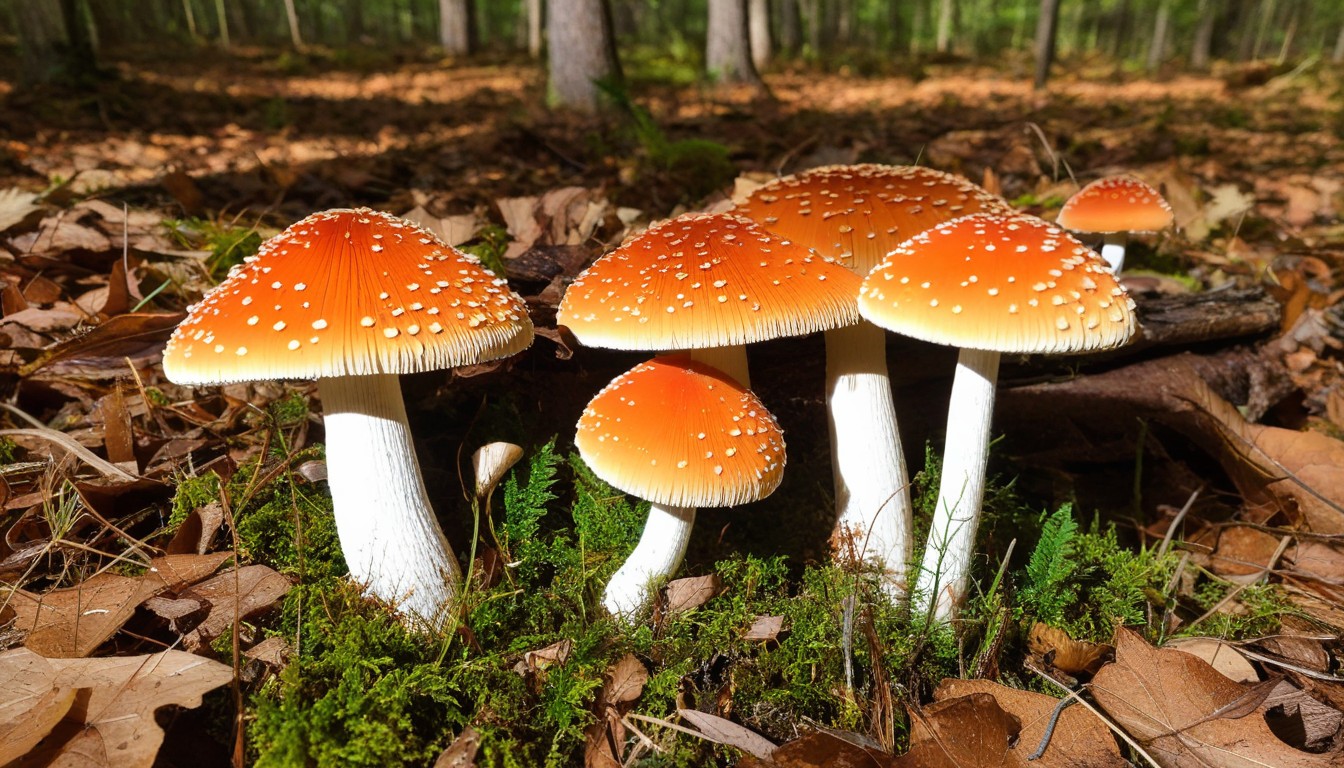
Pets love to join their owners on outdoor adventures, exploring new trails, and natural landscapes.
However, as much as we enjoy the great outdoors, we need to be aware of the potential hazards that may harm our furry friends, including poisonous mushrooms.
As in humans, consuming poisonous mushrooms can cause severe health issues in pets, leading to symptoms such as vomiting, excessive drooling, or in extreme cases, liver or kidney failure.
In Alabama, there are many poisonous mushroom species, including the deadly death cap mushroom and the destroying angel mushroom. These species can be fatal for pets as well as humans.
It is essential to remember that dogs are more likely to consume mushrooms, as they are more curious and enjoy scavenging.
Poisonous Mushroom Species in Alabama | Potential Symptoms in Pets |
|---|---|
Death cap mushroom | Vomiting, diarrhea, lethargy, seizures, coma |
Destroying angel mushroom | Abdominal pain, vomiting, diarrhea, lethargy, seizures |
Amanita muscaria | Disorientation, vocalization, agitation, mydriasis, tachycardia |
To keep your pets safe while exploring Alabama’s outdoors, it’s crucial to
- Be familiar with common poisonous mushroom species in the area,
- Avoid letting your pet off-leash where they may encounter mushrooms,
- Monitor your pet’s behavior and health closely, especially if they have consumed something unknown,
- Take your pet to a veterinarian if you suspect they have consumed a poisonous mushroom.
By taking these precautions, you’ll keep your pets out of harm’s way and be able to enjoy the beautiful outdoors of Alabama safely.
Safe Mushroom Handling and Preparation in Alabama
Enjoying freshly picked mushrooms can be tempting, but improper handling and preparation can pose serious health risks. Follow these guidelines to ensure safe mushroom consumption in Alabama:
Mushroom Storage
Tip | Explanation |
|---|---|
Keep mushrooms dry | Excess moisture can lead to spoilage and bacterial growth. Store mushrooms in a paper bag or container with a paper towel to absorb moisture. |
Store in the refrigerator | Keeping mushrooms in a cool temperature of 34 to 40°F (1-4°C) will help prolong their shelf life. |
Use within a few days | It’s best to consume mushrooms as soon as possible after harvesting, but if storing, try to use them within a few days. |
Mushroom Preparation
- Wash mushrooms thoroughly before cooking to remove any dirt and debris.
- Trim the stem and any bruised or discolored parts of the mushroom.
- Cook mushrooms thoroughly to avoid any potential health risks.
- Avoid eating raw mushrooms.
By following these safe mushroom handling and preparation tips, you can enjoy the delightful flavors of Alabama’s native mushroom species without putting your health at risk.
Seeking Expert Advice: Alabama Mushroom Organizations
If you’re an avid mushroom hunter in Alabama, seeking expert advice and guidance could make a significant difference in your safety. Fortunately, there are several mushroom organizations and resources available across the state. Here are some of the best:
North Alabama Mushroom Society
The North Alabama Mushroom Society is a group of mushroom enthusiasts who primarily focus on promoting the study and consumption of edible and medicinal mushrooms. They organize mushroom forays, conduct lectures, and host workshops on various aspects of mushroom cultivation. Check out their website for membership information and upcoming schedules.
Alabama Mushroom Society
The Alabama Mushroom Society is a dedicated organization that aims to promote mushroom identification, cultivation, and research for the benefit of the community. They have a strong academic background and boast of several expert members specialized in various aspects of mycology. The organization also conducts public events, workshops, and exhibits to increase the awareness of mushroom safety and identification.
Alabama Cooperative Extension System
The Alabama Cooperative Extension System provides comprehensive resources and educational programs on a wide range of topics, including fungi and mushroom safety. Their website offers a broad spectrum of information, including regional mushroom identification, frequently asked questions, and safety tips. Contact your local extension office to explore more mushroom resources and guides.
No matter your level of expertise, connecting with knowledgeable individuals and resources can help you assess potential risks and stay safe while foraging. Take advantage of these Alabama mushroom organizations and resources to boost your knowledge and safely enjoy your mushroom hunting adventures.
Poisonous Mushroom Look-Alikes in Alabama
While foraging for mushrooms in Alabama, it’s crucial to distinguish between poisonous varieties and their look-alikes. Mistaking a toxic mushroom for a harmless one can lead to serious health complications.
One example of this is the death cap mushroom, which is often mistaken for edible varieties due to its similar appearance. The death cap mushroom has a smooth cap that ranges in color from yellow-green to olive-green, and it grows on or near oak trees. Its stem is white and bulbous at the base, with a distinctive ring and cup-like structure.
Another similar-looking mushroom is the meadow mushroom, which resembles the deadly galerina mushroom. The meadow mushroom has a smooth, round cap that is pinkish-tan to brown in color, and it grows in meadows and fields. Its stem is white and fibrous, and it has a ring near the top.
Other common poisonous mushroom look-alikes in Alabama include:
- The yellow-staining mushroom, which looks similar to the edible chanterelle mushroom.
- The false morel, which resembles the edible morel mushroom.
- The fool’s mushroom, which looks like the edible puffball mushroom.
To avoid confusion between toxic and harmless mushrooms, make sure to carefully research and identify any species that you plan to forage. Consider joining a local mushroom hunting group or consulting with an expert to ensure your safety.
Conclusion
Alabama is home to a variety of mushroom species, both edible and poisonous. While foraging for mushrooms can be a fun and rewarding activity, it is important to prioritize safety and take the necessary precautions to avoid potential risks.
Remember to always properly identify mushrooms before consuming them and be aware of common poisonous species that are found in Alabama, including the infamous Death Cap mushroom.
If you are unsure about a mushroom’s identification or have any concerns about potential health risks, seek advice from local mushroom organizations or experts.
By following safe mushroom handling and preparation practices and staying informed about the potential dangers, you can enjoy the beauty and deliciousness of Alabama’s mushrooms while ensuring your own safety and well-being.
Stay safe and happy hunting!
FAQ
Are all mushrooms in Alabama poisonous?
No, not all mushrooms in Alabama are poisonous. There are both edible and poisonous mushroom species found in the state. It’s important to learn how to properly identify poisonous mushrooms to avoid any health risks.
How can I identify poisonous mushrooms in Alabama?
Identifying poisonous mushrooms in Alabama requires knowledge of their distinctive characteristics. Look out for warning signs such as brightly colored caps, unpleasant odors, or bulbous stems. It’s always best to consult a mushroom expert or guidebook for accurate identification.
What are some common poisonous mushroom species in Alabama?
Some common poisonous mushroom species found in Alabama include the Death Cap (Amanita phalloides), Destroying Angel (Amanita bisporigera), and Fool’s Mushroom (Amanita verna). These mushrooms are highly toxic and can be fatal if ingested.
What are the potential health risks of consuming poisonous mushrooms?
Consuming poisonous mushrooms can lead to a range of health risks, including gastrointestinal distress, liver damage, kidney failure, and even death. It’s crucial to seek immediate medical attention if you suspect mushroom poisoning.
Are there any popular edible mushrooms in Alabama?
Yes, Alabama is home to several popular edible mushroom species, such as the Morel (Morchella spp.), Chanterelle (Cantharellus spp.), and Chicken of the Woods (Laetiporus sulphureus). These mushrooms are highly valued for their culinary purposes.
What are some essential foraging tips for mushroom hunters in Alabama?
When foraging for mushrooms in Alabama, it’s important to wear protective gloves, carry a field guide or mushroom identification app, and avoid consuming any mushrooms unless you are certain of their edibility. Additionally, be respectful of the environment and only take what you need.
Can poisonous mushrooms harm pets in Alabama?
Yes, some poisonous mushrooms found in Alabama can be harmful to pets if ingested. It’s crucial to keep a close eye on your pets during outdoor activities and discourage them from sniffing or eating any mushrooms. If you suspect mushroom poisoning in your pet, consult a veterinarian immediately.
How should I handle and prepare mushrooms safely in Alabama?
To handle and prepare mushrooms safely in Alabama, always wash them thoroughly, remove any dirt or debris, and cook them at a sufficient temperature to kill any potential toxins. It’s also important to store mushrooms in a cool, dry place and consume them within a reasonable timeframe.
Are there any mushroom organizations in Alabama that offer expert advice?
Yes, there are several mushroom organizations in Alabama that provide expert advice and guidance on mushroom identification and safety. Some notable organizations include the Alabama Mushroom Society and the Mushroom Club of Alabama.
What are some common poisonous mushroom look-alikes in Alabama?
In Alabama, some common mushroom species that resemble poisonous varieties include the False Chanterelle (Hygrophoropsis aurantiaca) and the Jack-o’-Lantern (Omphalotus illudens). It’s crucial to carefully compare the distinguishing characteristics before consuming any mushrooms.

